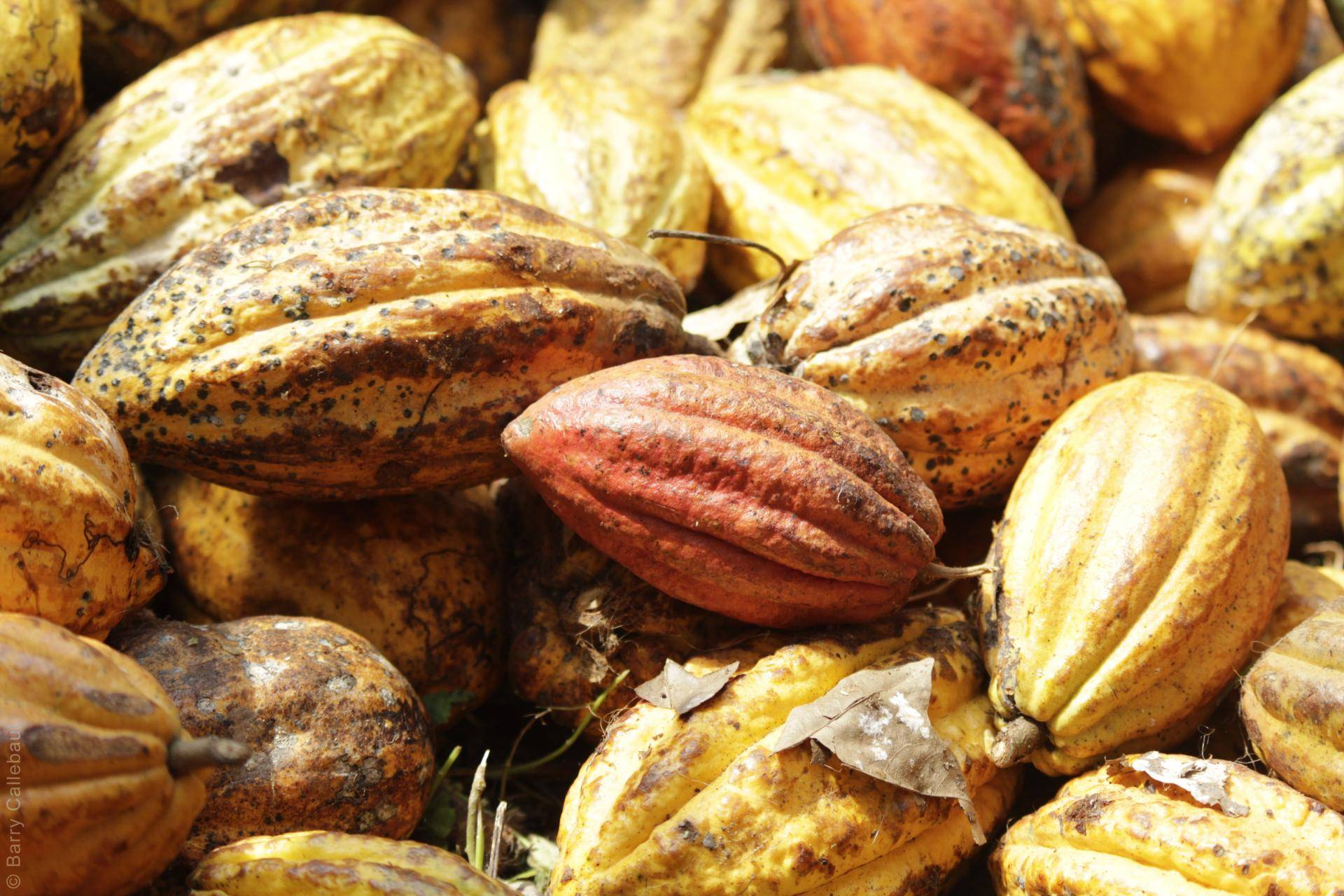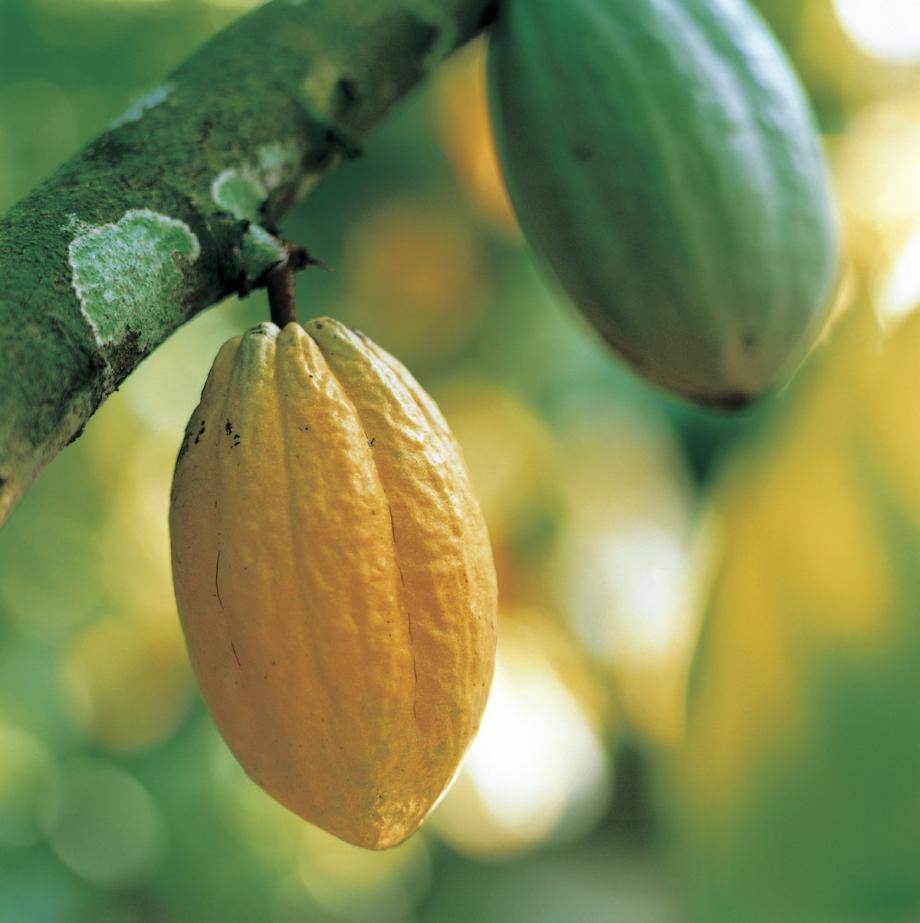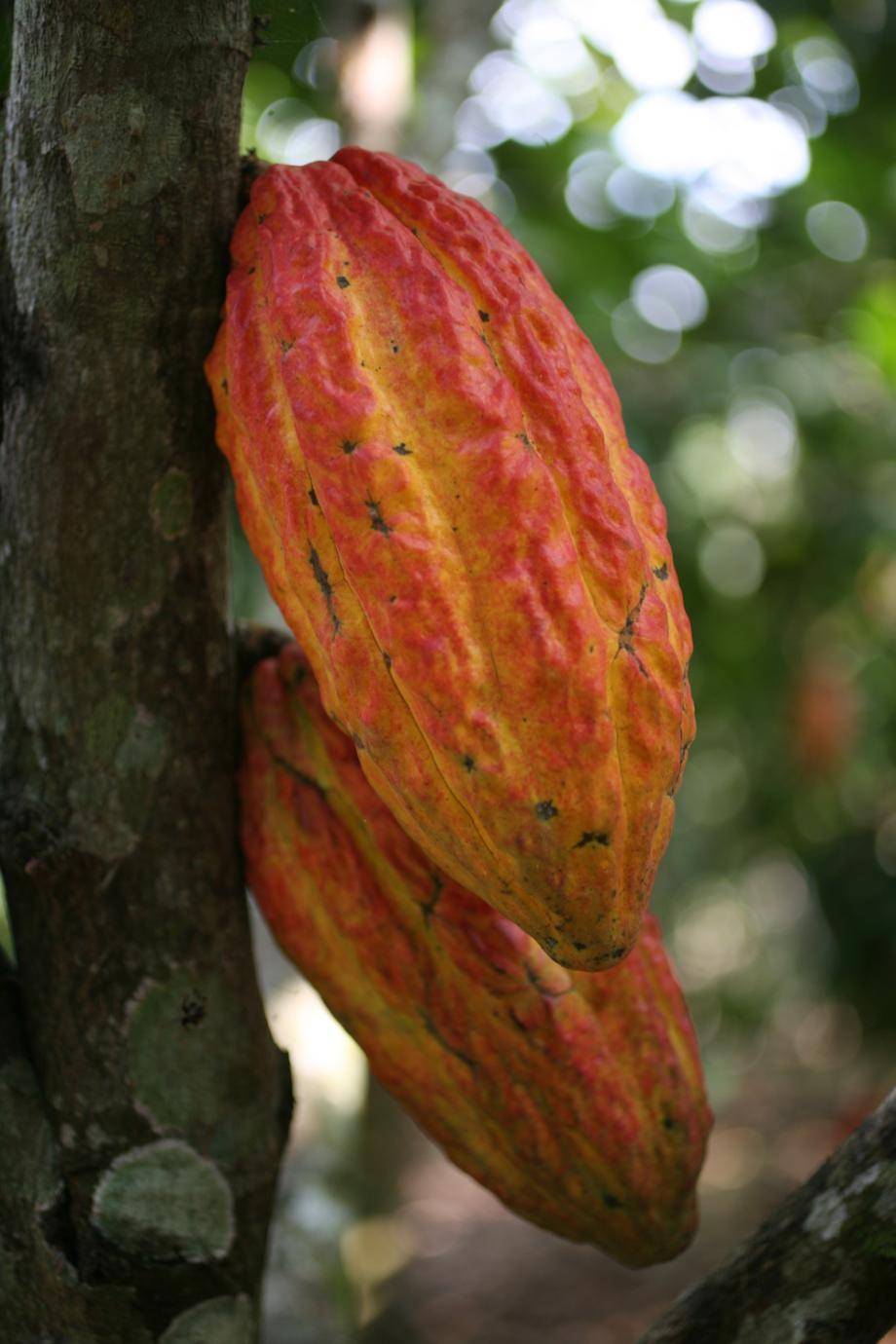Theobroma cacao, the food of the gods

Theobroma cacao, the food of the gods
A treasure from the heart of the tropical rainforest
Theobroma cacao is an elegant tree that thrives in the equatorial region from Central and South America to Africa and Indonesia, below an altitude of 600 meters above sea level.
The Criollo tree is native to Central and South America as well as the Caribbean islands.
The climate must be warm, with a consistent temperature of 25-27°C (77-81°F). The tree cannot withstand extremely dry or wet periods. Rainfall should ideally be regular and between 1250 and 2500 mm per year. The tree is also highly sensitive to strong winds and direct sunlight. For this reason, it grows best under the shade and protection of other, tall-growing plants and trees. The cocoa tree prefers soil that’s fertile, slightly acidic and well drained, but also capable of storing some water to fall back on in drier times.
The cocoa tree can grow as tall as 12-15 m in the wild. But to facilitate harvesting most cocoa farmers do not let it grow higher than 4-8 m. The cocoa tree blooms and bears fruit the whole year round. This means that cocoa has flowers and fruit on the tree at the same time. In two cycles of six months, thousands of delicate flowers adorn the stem and main branches. Only approximately 40 will eventually develop into fruit. Each flower blooms for only a single day.
When a bud matures, the flower starts to open in the afternoon and continues to open during the night. Early the following morning, the flowers are fully open and the male part of the flowers release their pollen. Then it’s up to ants and tiny flies to venture from one flower to the next and pollinate the female part of the flowers. The flowers that get fertilised will develop into cocoa pods over a period of about five months.
Full-grown pods vary significantly in shape, texture and size, and can range from about 15 cm to over 35 cm in length. A ripe fruit typically contains 20 to 75 cocoa beans, each 1 cm to 3 cm long, embedded in a white pulp. Cocoa beans are very nutritious; they consist mainly of fat (50%) and carbohydrates (25%). In addition, cocoa contains proteins, theobromine, niacin, minerals (including calcium, iron, potassium, magnesium, sodium, and phosphorus) and vitamins A, B1, B2 and B6.

Criollo is used in the very finest chocolates
Criollo - the rare
The Criollo tree is native to Central and South America as well as the Caribbean islands and Sri Lanka. Only 5% of the world’s production is Criollo.
Criollos are particularly difficult to grow, as they are extremely vulnerable to a variety of environmental threats. The beans have a white to pale pink colour and their taste is described as delicate yet complex, low in classic chocolate flavor, but rich in secondary notes of long duration. Considered to be the “prince of cocoas,” Criollo is prized as an ingredient in the very finest of chocolates.

Forastero is mainly grown in Africa, Ecuador and Brazil
Forastero - the versatile
The most commonly grown cocoa is Forastero. It is most likely native to the Amazon basin. Today, Forastero is mainly grown in Africa, Ecuador and Brazil and accounts for 80% of the world’s cocoa supply. What makes it so popular is that it is much hardier and less susceptible to diseases. It has a much higher yield than the Criollo variety. Forastero cocoa has purple-coloured beans and is mainly used to give chocolate its full-bodied flavor. Its bitter taste has a short duration and is unsupported by secondary flavors, which is why it is often blended with superior cocoas. There are many Forastero subspecies: Amelonado, Cundeamor and Calabacillo, to name but a few. Amelonado cocoa is the most extensively planted cocoa of all.
Forastero got its name from the Spanish who at first imported Criollo cocoa exclusively from Venezuela. They regarded Criollo as the original variety of cocoa, as opposed to the ‘foreign’ Forastero variety from the Amazonas region.

Trinitario is a hybrid class resulting from cross-pollination
Trinitario - the hybrid
Trinitario is a natural hybrid biological class resulting from cross-pollination. Legend recounts that it first came into existence on the Island of Trinidad, after a hurricane nearly completely destroyed the local Criollo crops in 1727. Assuming all the trees were dead, the plantations were replanted with Forastero, but spontaneous hybrids appeared. Trinitario combines the best of the two other main varieties: the hardiness and high yield of Forastero and the refined taste of Criollo. The quality of the cocoa varies between average and superior. It is the predominant fine flavor cocoa. Trinitario populations are usually variable in pod and bean characteristics because the parents have highly contrasting characters. They can now be found in all the countries where Criollo cocoa was once grown: Mexico, the Caribbean islands, Colombia, Venezuela, and in parts of Southeast Asia.